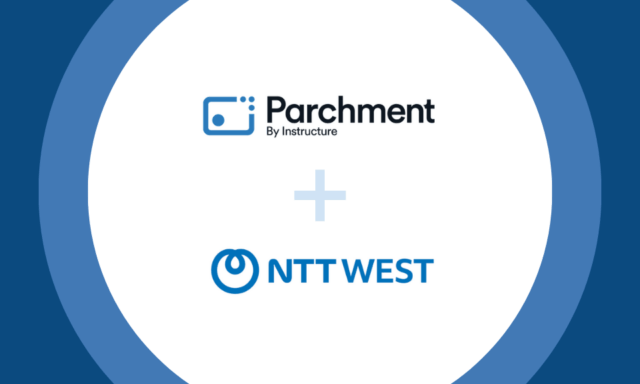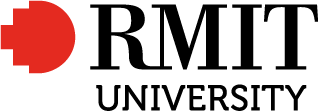
International
Parchment by Instructure and NTT West announce partnership in Japan
Parchment by Instructure is pleased to announce its partnership with NTT West in Japan.

What to Expect:
In the higher education landscape, relying solely on manual credential management is becoming outdated and inefficient. Institutions are under mounting pressure to upgrade their processes, driven by the need for greater accessibility, automation, and a global shift toward digitisation. This white paper explores the urgency for transformation in credential management and the growing importance of adopting digital solutions.
If you prefer to read this in PDF format click here:
Download White Paper
Manual credential management is becoming burdensome, pushing institutions toward modernisation.
Digital credential management systems enhance security, reduce costs, and offer scalable solutions.
The drive for digital transformation in education is driven by market demands for online access to credentials and badges, as opposed to paper.

Adopting best practices for digital credentialing can streamline operations and set the stage for long-term success.
Instant verification and seamless sharing of credentials are crucial in the current skills-based job market.
Moving to digital systems requires careful planning and alignment with institutional goals.
Digital credentials are transforming the way learners showcase their achievements, offering a more dynamic and shareable way to verify skills and knowledge. Unlike traditional paper degrees, digital credentials are easily issued, verified, and managed, allowing for greater adaptability in educational and career pathways. These credentials empower learners to take control of their lifelong learning journeys, making it simpler to demonstrate their qualifications in a skills-based employment landscape.
Because efficient, secure, and easily accessible credentials are critical today, clinging to outdated and manual methods of managing academic credentials in higher education can hold institutions back — ultimately doing the same to its students.
Today, the European Union’s SHARE programme is partnering with universities across the ASEAN region to accelerate the digital transformation of higher education. This initiative aims to enhance online student exchanges through:
Adopting digital credential management is not just a smart choice; it’s essential for modernising operations, safeguarding an institution’s reputation, and meeting the high expectations of today’s students and employers.
Credentials are official documents or digital records that confirm and validate an individual’s academic achievements, qualifications, and skills. Unlike traditional qualifications, credentials vary in size, complexity, and duration. They also come in several forms, from diplomas and certificates to transcripts, badges, and more — each showcasing and authenticating achievements in its own way.
Efficiently managed credentials have the immense potential to:
It’s still uncommon for higher education institutions in the ASEAN region to use digital documents for regulating mobility and recognition. When they do, it’s often limited to traditional methods like spreadsheets, paper-based systems, and physical document management — rather than true computer-readable formats.
Unfortunately, these approaches come with drawbacks that hinder the seamless digital experience students expect. Most notably, they can expose sensitive information to security risks, lead to labour-intensive processes that cause delays, and increase the chance of losing or damaging physical records.
Outdated methods also fall short of providing students with instantly shareable credentials, which are crucial for enhancing employability in a competitive job market. In fact, digital technology is now being leveraged for skills-based development in education across Southeast Asia today — with SEAMEO’s Strategic Plan 2021-2030 prioritising digital transformation and a rapid adoption of change.
Consequently, higher education institutions face calls to modernise. This ensures they’re equipped to boost efficiency, ease staff workloads, and meet the expectations of today’s tech-savvy students.
While governments in Indonesia, the Philippines, Vietnam, and Singapore are increasingly supporting digital credentialing, they’re each at different stages of development. Meanwhile, Malaysia and Thailand have pockets of expertise in private institutions, but Cambodia, Myanmar, and Laos have yet to develop initiatives in this area.
When it comes to credential management, manual processes limit what further education schools can achieve. Much like RMIT University, which struggled with damaged and returned prints becoming a budget and resource issue, many institutions face the dual challenges of time-consuming manual processes and an increasing demand for digital solutions.
Consequently, higher education institutions face calls to modernise. This ensures they’re equipped to boost efficiency, ease staff workloads, and meet the expectations of today’s tech-savvy students.

To simplify academic credentialing, RMIT University embraced My eQuals powered by Parchment*, saving $830,000 a year and cutting down on waste. Students can now access secure, tamper-proof digital credentials instantly — making it easier than ever to share their achievements. By streamlining processes and boosting staff productivity, RMIT has created a more efficient and user-friendly experience for students and alumni alike.
*My eQuals is the official digital credential platform for tertiary education in Australia and New Zealand, powered by Parchment. It’s a collaboration with universities and the Higher Education Standards (HES) governing body, providing secure, digital credentialing for students.

Data Security and Privacy Concerns
Manual processes often expose institutions to breaches and unauthorised access, making it challenging to comply with personal data protection regulations. This jeopardises sensitive learner information — such as email addresses, personal home address details, and other private data — and can seriously damage institutional trust.

Time-Consuming and Error-Prone
Manual data entry is not only slow but also prone to mistakes, increasing the administrative workload and the risk of inaccuracies. This inefficiency can delay crucial processes and diminish the effectiveness of credential management — not to mention raise operational costs.
Inefficient Data Storage and Retrieval
Relying on spreadsheets for student data means risking total loss if the file crashes, while storing digital documents in folders eats up space and slows down retrieval. Accessing crucial records this way becomes a frustrating and time-consuming task.
The Risks of Outdated Tools in Credential Management
Sticking with outdated tools like spreadsheets and physical documents creates a host of data management issues, compliance headaches, and operational inefficiencies. These problems underscore the need for modern systems to streamline and secure credential management.
With 400 million internet users, South East Asia is rapidly adopting digital technology in education, with more learning platforms emerging and digital credentials reshaping higher education.5 And governments are advancing this digital transformation through initiatives such as open universities and the formal recognition of micro-credentials.
Several key factors are fueling the shift toward these digital practices:
The COVID-19 pandemic was a major catalyst for digital transformation in education, leading institutions to adapt to remote learning and enhance flexibility and accessibility.
Beyond the pandemic, digital transformation helps solve major global education challenges like improving access, cutting administrative costs, enhancing quality, and managing larger class sizes.
Southeast Asian countries are driving the digitisation of higher education with supportive regulations, bold initiatives, and innovative use of digital technologies. Strategic plans like Malaysia’s Higher Education Blueprint and Vietnam’s Digital Transformation Program highlight the region’s dedication to modernising education and expanding access through cutting-edge digital solutions.
As more learners pursue digital education and remote job opportunities, the demand for verifiable digital credentials has skyrocketed. At the same time, 89% of employers believe digital credentials will be critical in higher education, complementing traditional qualifications and playing a key role in entry-level jobs across major industries.
Modern digital tools support continuous skill development, which is becoming essential in today’s fast-paced workforce. Institutions that embrace these changes can improve their reputation and attract more learners.
With increasing demands for modernisation and digital credentials, higher education institutions are turning to digital credential management systems for support. These secure platforms enable institutions to create, store, verify, and share digital credentials — reducing the inefficiencies of manual processes and helping to drive digital transformation.
With 75% of employers struggling to find candidates with the right capabilities, digital credentials play a vital role in bridging the skills gap.
Plus, digital credentials can be easily shared on social media, boosting visibility, engagement, and even employability.

Mirna Bitar
Associate Director, Completions, Awards and Graduations at RMIT University
Digital credentials provide a richer, more detailed record of achievements compared to traditional grades and can be shared more widely than academic transcripts. An effective credentialing management strategy not only supports learners’ personal identity but also enhances their social engagement.
The advantages extend beyond learners — explore how digital credential management benefits multiple educational stakeholders as institutions embrace this modern approach:


Mirna Bitar
Associate Director, Completions, Awards and Graduations at RMIT University
To ensure smooth, secure, and efficient operations, it is crucial to find a credential management system tailored to your unique needs. The right solution not only streamlines processes but also empowers your institution to stay ahead in today’s fast-paced educational landscape — allowing both learners and staff to thrive.
Core features
Ensure the system offers digital issuance, secure storage, and streamlined verification for efficient credential management.
Cost
Consider both upfront costs and ongoing expenses like maintenance and support.
Scalability
Choose a platform that can grow with your institution’s needs.
Integration
Ensure compatibility with existing systems like your Student Information System (SIS) and Learning Management System (LMS) to avoid workflow disruptions.

User-friendliness
Opt for an intuitive interface that is easy for both staff and learners to use effectively.
You have selected the right solution and a trusted provider — what comes next? Here are the best practices for implementing a credential management system effectively:
Create a detailed rollout plan with clear goals and timelines to ensure a smooth transition and keep things running seamlessly.
Involve administrators, faculty, and IT staff in the planning and implementation process to align the system with institutional needs and secure their support.
Offer comprehensive training for all users, including hands-on workshops and ongoing support, to help them get the most out of the new system.
Carefully plan and execute data migration to ensure accurate transfer and integration of existing data without any hiccups or loss.
Regularly assess the system’s performance and gather user feedback to make necessary adjustments and improve functionality along the way.

Mirna Bitar
Associate Director, Completions, Awards and Graduations at RMIT University
As higher education institutions recognise the limitations of sticking with outdated manual processes, digital credential management emerges as more than just a trend; it is a necessary shift to keep up with the demands of the digital age.
That is where Parchment comes in. As a leading player in credential management, Parchment Digitary Services can transform how you handle academic credentials. Here is how the platform adds value:
Embrace the future with Parchment and say farewell to cumbersome manual processes. That way, you can focus on what truly matters — improving educational outcomes and supporting student success.

